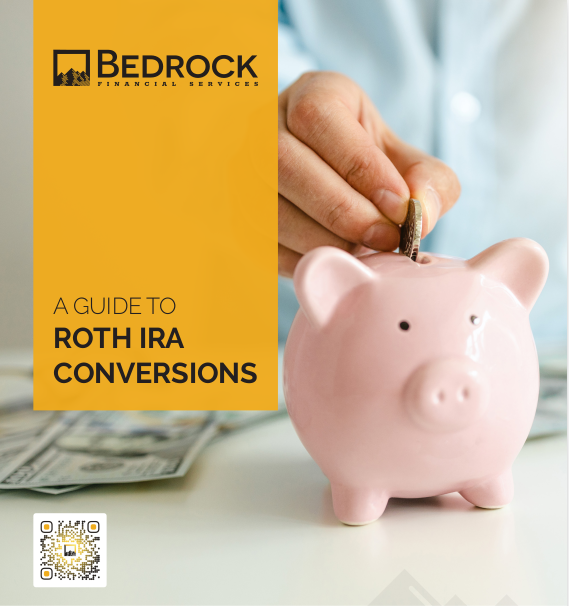Key Takeaways
-
Visuals that get saved and shared are rarely the most complicated—they’re the ones that give instant clarity, value, or validation.
-
As a financial professional, investing time in intentional visual content creation can set your brand apart and lead to stronger client relationships and more organic growth.
Why Visuals Matter More in 2025
Visual communication is no longer a marketing add-on—it’s a necessity. In 2025, attention spans continue to shrink while expectations for quick, valuable content keep rising. People want information they can process in under 10 seconds, and visual assets are the fastest delivery vehicle.
For financial professionals, this presents an opportunity. Your audience isn’t just scrolling; they’re looking for clarity in a complex world of money talk. Whether it’s retirement planning, tax changes, or investment strategies, your visuals can either cut through the noise—or be ignored.
What Clients Actually Save and Share
You might assume it’s the flashiest infographic or the one with the most design flourishes. It’s not. The visuals that get saved and shared consistently have three qualities:
1. Immediate usefulness
Does the visual solve a problem in seconds? Think of comparison charts, timelines, or checklist graphics. If your audience sees a visual that instantly helps them:
-
Make a decision
-
Understand a concept
-
Spot a mistake they’re making
…they’re more likely to save it.
2. Emotional validation
Money is emotional. When people see content that reflects how they feel—frustrated with budgeting, overwhelmed by tax planning, or excited about early retirement—they feel seen. Use:
-
Relatable statements
-
Milestone visuals (“What 45 Looks Like Financially”)
-
Reality-check graphics (“Retirement Math Most People Miss”)
This drives not only shares but also comments and messages.
3. Simplicity of format
You don’t need 12 data points on a single slide. One powerful message, clearly delivered, is more shareable. Keep these visuals scannable:
-
Use one headline
-
Stick to 2-3 supporting bullets or a single chart
-
Avoid overloading with branding elements
Visual Formats That Work in 2025
You have many options, but these are the ones currently generating the most traction:
Carousel Slides
Ideal for platforms like LinkedIn and Instagram, carousels allow you to build a narrative in 5–10 slides. Think of these as visual storytelling with a financial backbone:
-
“How to Read a Pay Stub in 2025”
-
“6 Money Questions to Ask Before Retirement”
-
“What the 2025 Tax Brackets Mean for You”
Each slide should hold just one idea or visual to ensure clarity and retention.
Comparison Graphics
Clients often need to choose between two options—Roth vs. Traditional, Lump Sum vs. Annuity, or Keep Working vs. Retire Early. Present the trade-offs in one clean frame:
-
Two columns
-
Icons or symbols instead of heavy text
-
Highlighted recommendation if applicable
These visuals help you pre-answer common questions and drive authority.
Timelines and Roadmaps
Whether it’s a year-long tax-saving plan or a multi-decade retirement strategy, timelines make long-term planning digestible. Consider these examples:
-
“Your Financial Milestones by Age: 30 to 70”
-
“What to Do Each Quarter to Stay Retirement-Ready”
-
“12-Month Plan for First-Time Investors”
Roadmaps signal structure and reduce overwhelm—both highly shareable outcomes.
Quick Tips Panels
Think 5 tips on one square. These are perfect for daily scrolls. Financial literacy is in demand, and when you serve it up in bite-sized doses, it sticks:
-
“5 Signs Your Portfolio Isn’t Diversified”
-
“3 Retirement Myths That Can Cost You Money”
-
“What to Check Every Month in Your Budget”
Use icons, numbers, and color coding for easier consumption.
The Design Choices That Affect Engagement
A great idea poorly designed won’t get shared. Here’s what you need to consider:
Typography
Go with bold, readable fonts. Stay away from ultra-thin or overly stylized fonts—especially in small formats. You’re not designing a movie poster; you’re designing to be understood in 3 seconds or less.
Colors
Contrast is your best friend. Background and text should never compete. Stick to your brand palette, but adjust saturation and hue to ensure visibility. Test on both light and dark mode backgrounds to ensure readability.
Layout
The fewer decisions a viewer has to make, the better. Use visual hierarchy:
-
Headline at the top
-
Bold middle point (graphic or key number)
-
Footer with optional CTA (call-to-action)
Avoid edge-to-edge text and keep margins consistent.
Avoiding the Mistakes Most Advisors Make
Even with the best intentions, some visual content doesn’t land. Here’s where things typically go wrong:
Overloading with Information
You know a lot—but you don’t need to say it all at once. Save the deep dive for your next one-on-one call or webinar. Visuals are the appetizer, not the main course.
Skipping the Hook
Don’t bury the lead. If the first visual slide doesn’t say what the post is about, your viewer won’t swipe. Be upfront:
-
“Stop Losing Money to Lifestyle Creep”
-
“What Wealthy People Know That You Might Not”
-
“Is Your Retirement Plan 2025-Ready?”
Using Generic Stock Icons
People are visual skeptics. When they see the same handshake icon or piggy bank over and over, their brain checks out. Invest in illustrations, consistent icon sets, or even custom avatars that reflect your actual audience.
When to Post Your Visuals for Maximum Engagement
Timing matters. Based on current engagement patterns across professional platforms, here’s what we know:
-
LinkedIn: Tuesday to Thursday, 8–10 a.m. and 4–6 p.m.
-
Instagram: Monday to Wednesday, 9–11 a.m.
-
Email visuals (as part of newsletters): Early Wednesday mornings see the highest open rates.
Be consistent. A great post at the wrong time won’t perform as well as a good post delivered when your audience is ready to engage.
How Long Visuals Stay Relevant
Financial content changes fast, especially with new tax laws, retirement regulations, or savings limits. The average shelf life of a financial visual in 2025 is:
-
1 week for news-driven content (e.g., tax bracket updates)
-
1–2 months for seasonal content (e.g., year-end tax tips)
-
6 months to 1 year for educational, evergreen content (e.g., compound interest visuals)
Update and repost. Relevance can be extended if you refresh the design, title, or delivery format.
Why Engagement Shouldn’t Be Your Only Goal
Getting likes and shares feels good, but don’t lose sight of your real purpose: building trust, educating your audience, and creating connection. The best visuals:
-
Encourage DM conversations
-
Prompt replies to your email
-
Lead to more discovery calls
Measure success not just by metrics, but by momentum.
Bringing It All Together With Strategy
If you’re serious about being seen and remembered, your visuals need a plan. Don’t treat them as filler—treat them as conversation starters. Revisit your top client concerns, FAQs, and recent wins. Then:
-
Turn those ideas into simple visuals
-
Stick to a consistent visual theme across platforms
-
Pair each post with a question or action
Visual content is your voice when you’re not in the room. Make it count.
The Smart Way Forward for Financial Professionals
The professionals getting noticed in 2025 aren’t those yelling the loudest. They’re the ones showing up clearly, consistently, and creatively.
If you want to create content that stands out and supports your growth, Bedrock Financial Services can help. We offer financial professionals the training, tools, and automation support to simplify your strategy—from lead generation to content execution. Sign up today and see how we help professionals like you elevate your brand with purpose.







